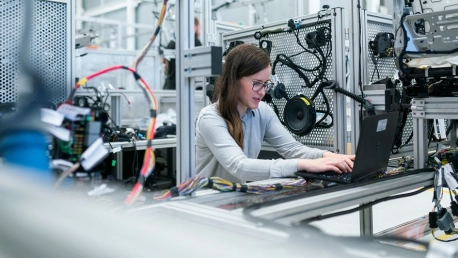Manufacturing is generally one of the most dynamic sectors in the global economy, both in terms of economic weight, and connections to all other sectors. Thanks to Industry 4.0 technologies, Zero Defect Manufacturing has the potential to become the new standard for companies interested in sustainable and resilient industrial production with zero defects and zero waste.
Accelerating the Development of the Manufacturing Sector
Sustainable development is a global goal to build a better and more environmentally-friendly future. However, the world still has a long way to go to fully exploit this potential, and many countries need to accelerate the development of the manufacturing sector and step up their investment in scientific research and innovation.
Companies are already paying a lot of attention to product quality. Traditional quality improvement (QI) methods, such as Lean Manufacturing (LM), Six Sigma (SS), Theory of Constraints (TOC), Total Quality Management (TQM), and Lean Six Sigma (L6S) are already well-established systems. However, traditional QI methods cannot autonomously learn from defects, as they simply track and discard them, and do not take full advantage of recent innovative, data-driven technologies. Moreover, traditional IQ methods don’t use any kind of prediction and, as a result, these methods can only provide a limited answer to the new scenarios that need to be addressed to implement an effective digital and green transition.
Reducing and Mitigating Failures in Manufacturing Processes
Industrial manufacturing faces highly dynamic scenarios to efficiently manage product circularity, minimum footprint on the production environment, process, and resource optimization. Efficient quality and waste management, both at the product and process level, has become essential in industrial competitiveness. In recent years, companies have been able to respond to rising customer expectations, mainly thanks to advances brought about by Industry 4.0. In addition, the transition to green manufacturing sets new rules for commercial success and sustainable production.
Zero Defect Manufacturing represents, for both researchers and industry, a viable replacement for traditional QI methods. ZDM is not a method, but rather a set of tools for reducing and mitigating failures in manufacturing processes, covering both product and process quality. This concept has only been partially implemented so far, due to many technological and economic limitations, such as the high cost of the equipment needed for data recording.
New Technologies Have Made the Implementation of the ZDM Concept Easier Than Ever
Today, things have changed. Increased computing power and data storage capacity, significantly reduced sensor prices, and the advent of new digital technologies have made the implementation of the ZDM concept easier than ever. The evolution of digital and automation technologies in Industry 4.0 enables smarter and faster responses to unexpected events and disruptions. Furthermore, the availability of large volumes of data needed to develop quality control strategies based on machine learning has enabled artificial intelligence to work well in factories and global value chains.
Zero Defect Manufacturing is not just about combating industrial waste in production processes. These solutions contribute to society by making more efficient and correct use of available resources, promoting the circular economy, reducing industrial pollution, increasing competitiveness and productivity in the industrial sector, and, last but not least, helping economic growth and social development. In this endeavor, businesses are looking to implement Zero Defect Manufacturing solutions that meet both national, and international needs.
The Impact of AI in Manufacturing Is Game-changing
Companies using AI have seen cost savings and revenue growth. According to McKinsey, 16% of those surveyed noticed a 10-19% decrease in costs, whereas 18% saw a 6-10% increase in overall revenue. AI systems also enable predictive analytics, which helps companies tackle operational challenges and supply chain disruptions. Another McKinsey report suggests that AI can improve forecasting accuracy in manufacturing by 10-20%, which translates to a 5% reduction in inventory costs and a 2-3% increase in revenues.
For example, French food producer Danone used machine learning to improve its demand forecast accuracy, leading to a 20% decrease in forecasting errors, a 30% decrease in lost sales, and a 50% reduction in demand planners’ workload.
Conclusion
Industrial production accounts for almost a fifth of the world economy, according to the 2022 edition of the International Yearbook of Industrial Statistics, published by the United Nations Industrial Development Organization (UNIDO). Thanks to critical Fourth Industrial Revolution (4IR) technologies such as ML, automation, predictive analytics, and IoT (Internet of Things), ZDM has the potential to become the new standard for companies moving toward resilient industrial production with zero defects and zero waste.









